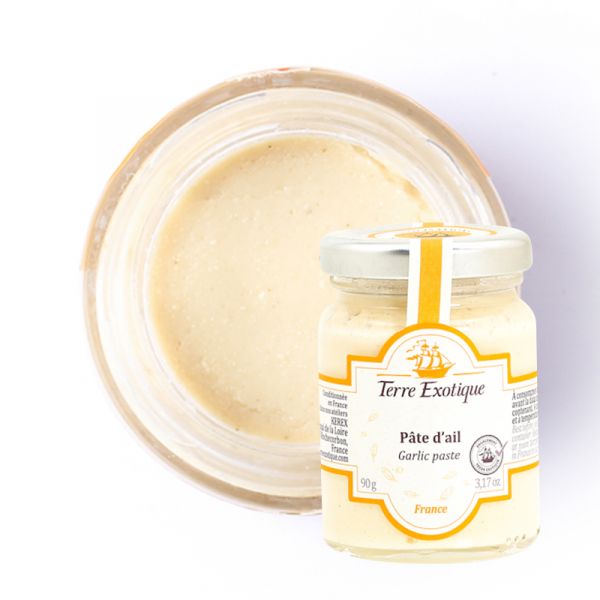



How to Use Garlic Paste in Cooking?
The intensely flavored garlic paste is to be used sparingly. It is particularly enjoyable in a pan of roasted potatoes, on simply toasted bread, to enhance braised dishes, and also in a vinaigrette. Other culinary uses include sauces like aioli, rouille, or pistou. It can also be used as a condiment with lamb leg or gratin dauphinois. It's surprising when mixed with butter with snails. The harmony is ideal with bread and sundried tomatoes.
Some Recipe Ideas to Use Garlic Paste
- - Garlic Pasta Sauce: Mix garlic paste with olive oil, fresh chopped parsley, and Parmesan cheese to create a flavorful garlic sauce. Add this sauce to cooked pasta al dente;
- - Garlic Chicken: Marinate chicken pieces with garlic paste, lemon juice, salt, and pepper. Grill, roast, or bake them for delicious garlic flavor;
- - Garlic Mashed Potatoes: Mix garlic paste with cooked and mashed potatoes. Add butter, milk, salt, and pepper for a creamy garlic mash;
- - Garlic Spread: Mix garlic paste with cream cheese to create a garlic spread. Spread on toast or use as a dip for fresh vegetables;
- - Roasted Garlic Vegetables: Coat vegetables like carrots, potatoes, and zucchini with garlic paste, olive oil, salt, and pepper. Roast them in the oven;
- - Garlic Rice: Add garlic paste to rice during cooking for uniform garlic flavor. Garnish with fresh herbs like parsley or chives.
The Intense Flavors of Garlic Paste
Its intense aroma evokes the distinct flavor of fresh garlic but with a more pronounced concentration. The aroma of garlic paste is deeply earthy, with slightly spicy notes and a hint of sweetness. Transforming fresh garlic into a paste creates a smooth texture, making it easy to incorporate into various recipes.
Botanical Exploration
Garlic paste originates from a fascinating botanical plant called Allium sativum, commonly known as garlic. Garlic is a bulbous plant belonging to the Amaryllidaceae family. Each garlic bulb consists of several cloves, and it is the transformation of these cloves into a paste that gives rise to this aromatic condiment. The botany of garlic paste is intrinsically linked to the variety and quality of garlic used in its production. Garlic paste retains the distinct aromas of fresh garlic while offering a smoother texture and increased convenience in cooking.
The Aromatic History of Garlic Paste
The history of garlic paste dates back to antiquity, where garlic was revered for both its culinary and medicinal qualities. Used by various civilizations, from ancient Egypt to Greece and Rome, garlic was often considered a precious ingredient. Over time, different cultures explored innovative ways to harness the unique flavors of garlic. The transformation of garlic into paste emerged as a practical method throughout history, offering an easier-to-handle alternative than fresh garlic cloves.
| Price/kg | 63,33 |
|---|---|
| Allergen | Absence |
| Native country | FRANCE |
| Ingredients | garlic (65.8%), olive oil (19%), sunflower oil, lemon juice, salt, |
| spices. | |
| Nutritional Info | VN Energie pour 100 g (energy for 100g) : 1252 kJ / 304 kcal VN Matière grasse (fat) : 28 g Dont acide gras saturés (of which saturated fat) : 4.0 g VN Glucides (carbohydrate) : 5.1 g Dont sucres (of which sugars) : 1.0 g VN Protéines (protein) : 3.9 g Vn Sel (salt) : 1.6 g |
| Contenance | 90g |
| TRACES EVENTUELLES D'ALLERGÈNES | céleri, sésame, moutarde, fruits à coques. |
 Français
Français 